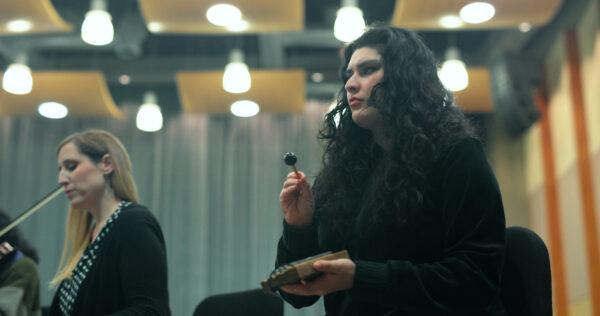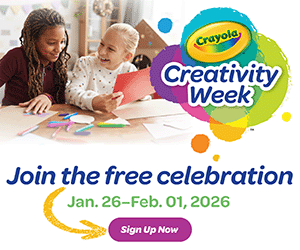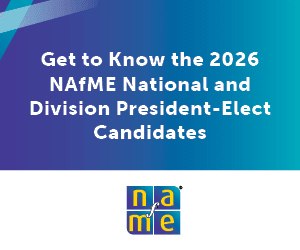NAfME BLOG
Missing Voices: A Research Agenda for Music Education Admissions Practices
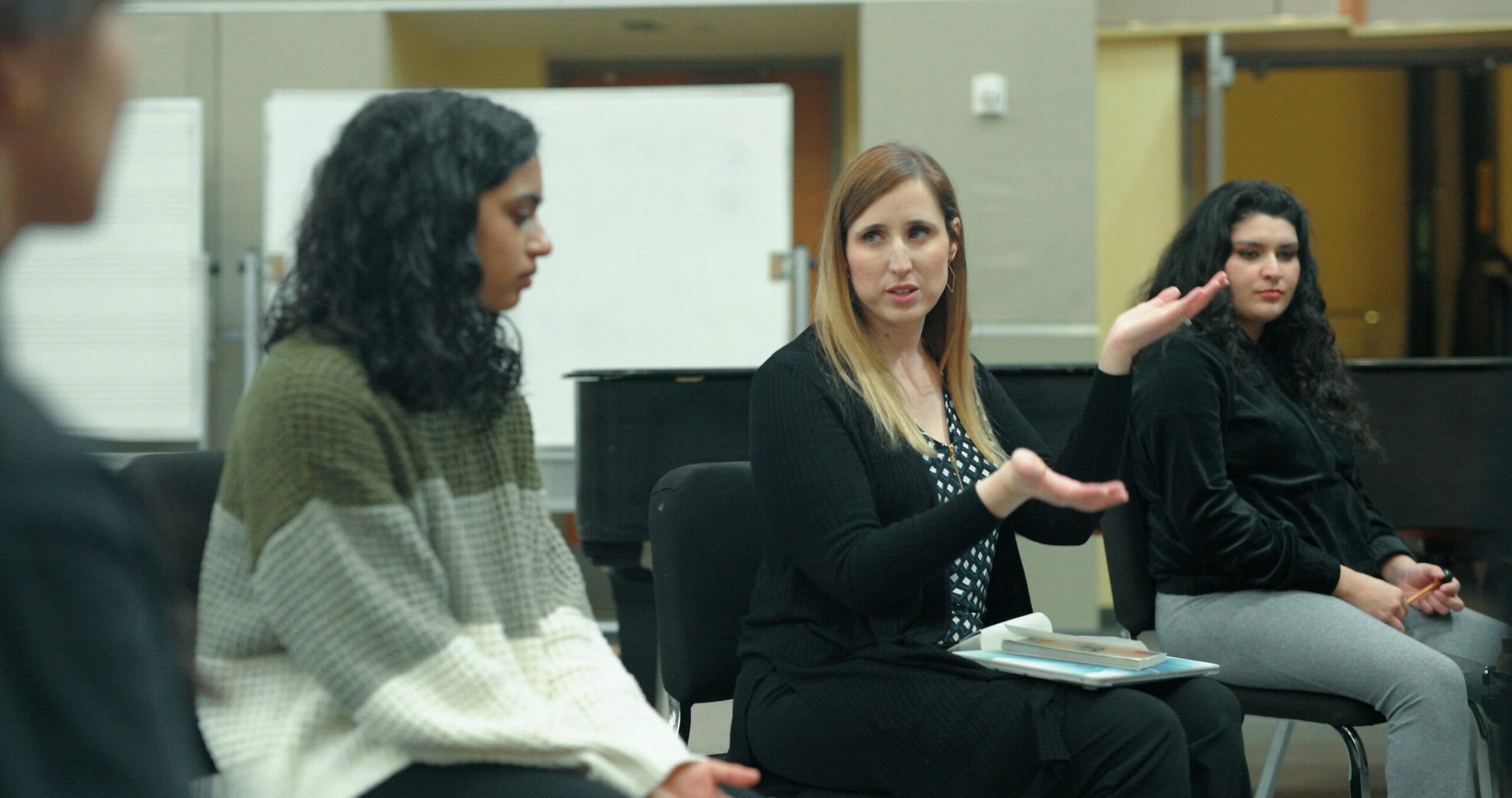
/ News Posts / Missing Voices: A Research Agenda for Music Education Admissions Practices
Missing Voices
A Research Agenda for Music Education Admissions Practices
By Ann Marie Stanley
This article first appeared in the February 2025 issue of Journal of Music Teacher Education (JMTE).
In my previous column, I emphasized the importance of collaboration in advancing music teacher education. Here, I address another pressing issue that affects the core of our profession: university admission to music teacher education programs. This area is also rich with opportunity for collaborative research and ready for implementation of whatever research-based practices we can further identify.
I have been recently influenced by the latest from multiple thought leaders on this topic. I talked with researchers at the National Education for Music Education Biennial Conference in September 2024. I am inspired by the ideas I hear from people working on issues related to A Blueprint for Strengthening the Music Teacher Profession (NAfME, 2023). I especially learn a lot from the faculty and students I interact with in my work as a director of a school of music: a role which has given me an additional birds-eye view on music admissions and audition practices.
Recent research by Nguyen et al. (2024) estimated that at least 2% of teaching positions are documented as perpetually unfilled; they went on to say that poor data, scarcity, and inconsistency of reporting procedures—and spotty, haphazard approaches to counting empty positions—likely render this percentage an undercount. Even more concerning, they estimated that at least 288,000 positions are filled by “underqualified teachers” (Nguyen et al., 2024, p. 14). These figures are deeply concerning, pointing to serious challenges in recruitment, retention, and professional development. Let’s focus on what the most recent JMTE research tells us about admissions and auditions:
- Traditional audition processes may not fully capture the diverse talents and potential of aspiring music educators and could stop students from matriculating into music teacher preparation programs (Robison et al., 2020).
- There’s a potential misalignment between our admission criteria and the evolving landscape of music education careers (Payne & Ward, 2020).
- We continue to grapple with a lack of diversity in our applicant pool (DeAngelis, 2022).
- The significant number of vacant positions suggests that our current approaches to recruitment and preparation will continue to be insufficient (Miller, 2024).
These challenges highlight the urgent need for a substantive re-examination of our admission practices in terms of issues of teacher recruitment and retention in music education. Based on my aforementioned recent conversations with thoughtful stakeholders, I wager few would disagree with me. I know the JMTE readership relish this topic and are already asking the questions, doing the research, and identifying salient implications for practice. We will all be better off as this line of inquiry continues. However, I’ve been thinking recently of some assumptions that need to be acknowledged. We can look at our university admissions and audition processes in (at least) three ways, and each may yield conflicting findings.
First, as I highlighted at the topic of this column: we need research on how university auditions and admissions have a downstream effect on the music teacher shortage. This will challenge a field that doesn’t have much infrastructure for longitudinal studies with large amounts of data. It’s going to be tough to figure out how actions we take now—leading up to, and in, the 2025 admissions cycle—will affect the music teaching population in, say, 2035. Will we say we were successful in Spring 2025 if many or most of the class of 2029 is still in the music teaching profession 6 years later? That seems a fair conclusion, but I am interested to see how our creative and smart researchers tie the qualification, retention, and success of music educators back to admissions work. In the end, how will we define success in improving the music teacher population? Is it merely fewer unfilled positions, or more and happier teachers, mirroring a diverse population, who feel confident and well-prepared to adapt to the challenges of a teaching career?
Second, we can look at research on admissions from the School of Music population perspective. This angle requires us to re-consider traditions ingrained in music schools and colleges. It’s been an assumption for many of us that a healthy school of music population is one where the studios and ensembles are full and balanced, the majors are all adequately populated, and faculty loads and curricular concerns are not thrown out-of-whack by a few unusually small or large classes. I agree that this describes a stable and well-functioning music program. We need to be honest that changes in admissions could throw off this balance and produce some disequilibrium in the unit. Yes, we should alter these traditions, now, in the hope they will pay off by augmenting the number of music teachers put into the world. But let’s recognize the real financial and organizational impact of admissions decisions, especially if we need to create different or parallel pathways within our programs, outside the traditional preparation framework (West, 2024). And a bigger question: What agency does a school of music have to redirect limited resources now to help one profession, later?
I can say it is higher education’s responsibility to help the world. I hope that admitting as many future teachers as we can reasonably accommodate will have positive impact on the teacher shortage and bolster K–12 music education in tangible, powerful ways. But I can also see that choices on how to appropriate money, space, and energy will have important consequences on many other students, staff, and faculty, and possibly the longevity of the institution itself. I look forward to researchers exploring this multifaceted issue in depth, helping our decisions be grounded in research and not just hopes.
Third, we should also continue to do inquiry from the perspective of the musician-applicants and their families (e.g., Abramo & Bernard, 2020; Austin, 2021). Opening pathways or breaking down barriers into the music teacher profession is not the same thing as compassionately, expertly helping students decide if music education is their future. Really, at audition/admissions season of life teenagers may not be able to decide what they want to do tomorrow, let alone after graduation—and that should be okay. Are there best practices in engaging with teenagers in this decision-making process? Practices that enable them to see themselves as creative musicians, with autonomy, and the power to make a difference in the world in a number of as-of-yet unforeseen and unpredictable ways? What parts of the music school matriculation phase are the most positive and the most empowering for all students (Garrepy & Bernard, 2024)? Is it possible for the audition process to be welcoming, setting the stage for future success, yet still let university personnel contribute their expertise on whether a student seems likely to thrive in a particular setting?
I acknowledge that congealed practices in audition requirements, audition hearings, and resulting admission decisions are stopping our profession from moving forward in an inclusive and equitable way (e.g., Alcala, 2024). However, I also note that our music faculty and admissions personnel collectively have decades of institutional wisdom from witnessing and participating in students’ university journeys. We would be foolish to completely pull that expertise out of the equation and replace it with new or untested evaluative methods. I witness faculty making reasoned, thoughtful comments on auditionees: It’s not capricious and it typically emerges out of a sense of care for the student and for the future. So, I hope that JMTE researchers will continue to do work examining what the auditions look and feel like for students and families amid of this decision of incredible gravity (e.g., Albert & Heiderscheit, 2023). I hope that research can intersect with an appreciation of faculty and institutional knowledge, and the people at the university who also realize the import of their admission decisions.
I will close with a series of questions:
- How do various admission pathways affect student success and retention in music education programs?
- What are the long-term career outcomes for students admitted through diverse criteria?
- How does our definition of musicianship in admissions affect the diversity and quality of our applicant pools?
- What is the relationship between our admission criteria and teaching effectiveness in the field?
- How can we design admission processes that address the significant teacher shortage and underqualification issues highlighted by recent research?
- What factors contribute to the high number of vacant and underqualified positions, and how can our admission and preparation processes address these factors?
- How do policy changes aimed at expanding the teacher supply affect the qualifications and effectiveness of music educators?
- What is the relationship between teacher qualifications, teacher supply, and student outcomes in music education?
- How can we develop a more standardized framework for assessing student outcomes in music teacher education while respecting the diverse nature of musical learning and expression?
- What metrics can we use to evaluate the effectiveness of music educators that go beyond measures of musical skill-building to include aspects such as student engagement, creativity, and lifelong musical participation?
- How do different stakeholders (applied faculty, music education faculty, staff, community partners, cooperating teachers, applicants, current students, alumni, parents, administrators) define success in music teacher education auditions and admissions, and how can we reconcile these potentially differing perspectives?
As scholars and educators, any changes we implement in our admission processes should be grounded in solid research. We can build on the evidence-based approaches already published in the JMTE and elsewhere to guide our decisions. I look forward to reading more work in this area by our dedicated music teacher education research colleagues.
References
Abramo J. M., Bernard C. F. (2020). Barriers to access and university schools of music: A collective case study of urban high school students of color and their teachers. Bulletin of the Council for Research in Music Education, 226, 7–26.
Albert D. J., Heiderscheit A. (2023). Reconceptualizing the audition for the 21st century music student. Arts Education Policy Review, 124(3), 135–148.
Alcala R. J. (2024). Recruiting and retaining Hispanic and Latino/a/x music educators: A literature review. Update: Applications of Research in Music Education, 42(3), 8–17.
Austin J. R. (2021). On demographics, diversity, and democracy. Journal of Music Teacher Education, 30(2), 6–9.
DeAngelis D. R. (2022). Recent college graduates with bachelor’s degrees in music education: A demographic profile. Journal of Music Teacher Education, 32(1), 25–37.
Garrepy S., Bernard C. F. (2024). “Nobody told me”: First-generation music educators’ soundtracks to navigating the academy. Journal of Music Teacher Education. Advance online publication.
Miller D. S. (2024). The workforce entry and teaching responsibilities of new music education graduates: Evidence from a state longitudinal data system. Journal of Music Teacher Education. Advance online publication.
National Association for Music Education [NAfME]. (2023). A blueprint for strengthening the music teacher profession.
Nguyen T. D., Lam C. B., Bruno P. (2024). What do we know about the extent of teacher shortages nationwide? A systematic examination of reports of US teacher shortages. AERA Open, 10.
Payne P., Ward J. (2020). Admission and assessment of music degree candidates. Journal of Music Teacher Education, 29(2), 10–21.
Robison T., Williams B., Hoffman E., Eros J. (2020). Music teacher recruitment of precollegiate and marginalized populations: A review of the literature. Update: Applications of Research in Music Education, 38(2), 20–28.
West J. J. (2024). National estimates and comparisons of alternatively and traditionally certified music teachers in the United States. Journal of Music Teacher Education. Advance online publication.
About the author:
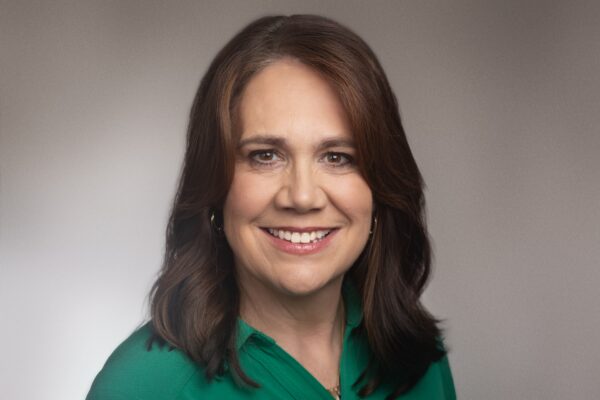 Ann Marie Stanley, Ph.D., Chair of the NAfME Society for Music Teacher Education, is Director of the School of Music and Professor of Music Education at The Pennsylvania State University. Before her appointment at Penn State, Stanley was Professor of Music and Associate Dean for Graduate Studies at Louisiana State University’s College of Music and Dramatic Arts, and Associate Professor of Music Education at the Eastman School of Music (2007–2016). Read her full biography.
Ann Marie Stanley, Ph.D., Chair of the NAfME Society for Music Teacher Education, is Director of the School of Music and Professor of Music Education at The Pennsylvania State University. Before her appointment at Penn State, Stanley was Professor of Music and Associate Dean for Graduate Studies at Louisiana State University’s College of Music and Dramatic Arts, and Associate Professor of Music Education at the Eastman School of Music (2007–2016). Read her full biography.
Did this blog spur new ideas for your music program? Share them on Connect! Interested in reprinting this article? Please review the reprint guidelines.
The National Association for Music Education (NAfME) provides a number of forums for the sharing of information and opinion, including blogs and postings on our website, articles and columns in our magazines and journals, and postings to our Connect member portal. Unless specifically noted, the views expressed in these media do not necessarily represent the policy or views of the Association, its officers, or its employees.
Published Date
October 14, 2025
Category
- Certification/Licensure
- Diversity, Equity, Inclusion, and Access (DEIA)
- Preparation
- Recruitment
- Representation
- Research in Music Education
Copyright
October 14, 2025. © National Association for Music Education (NAfME.org)
